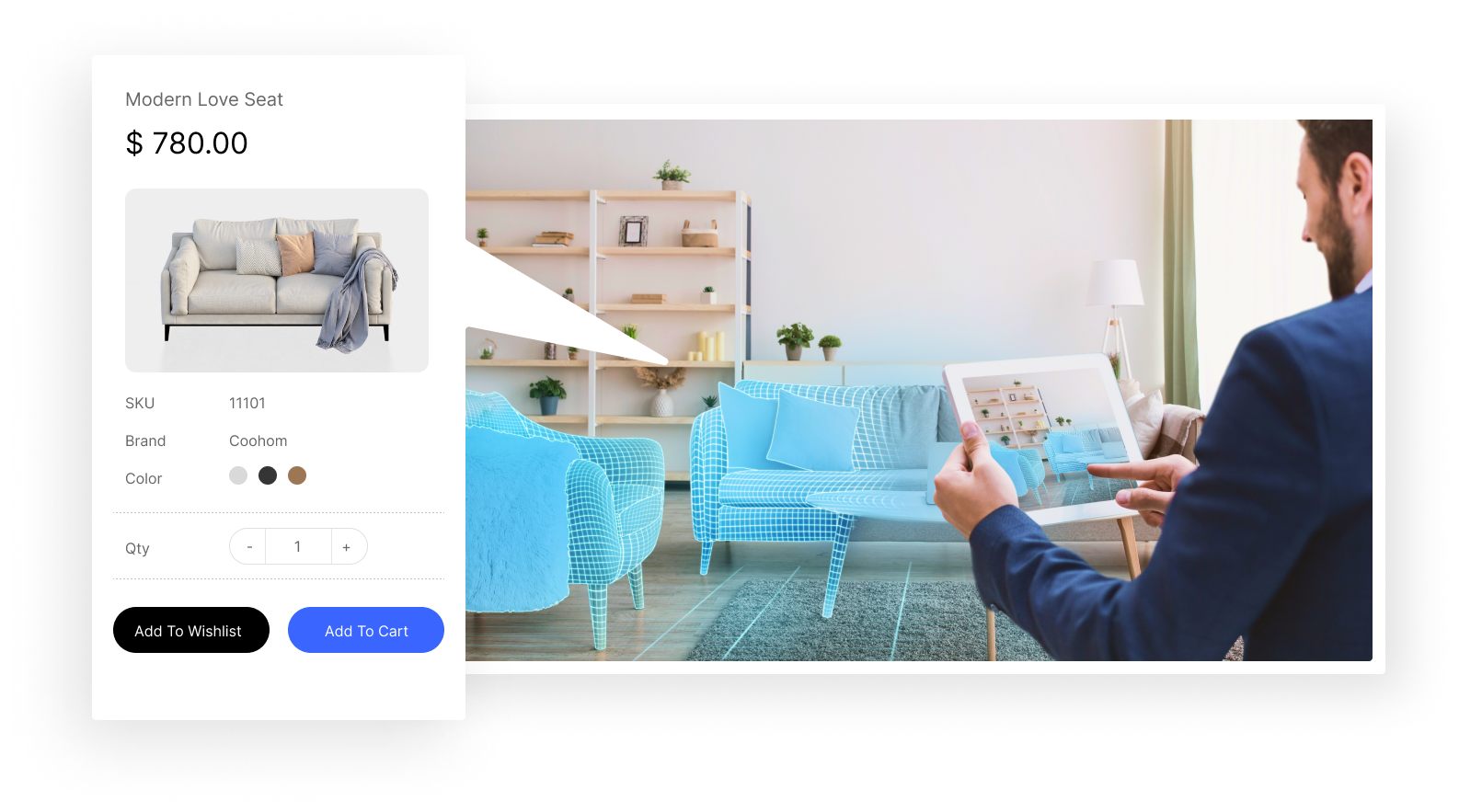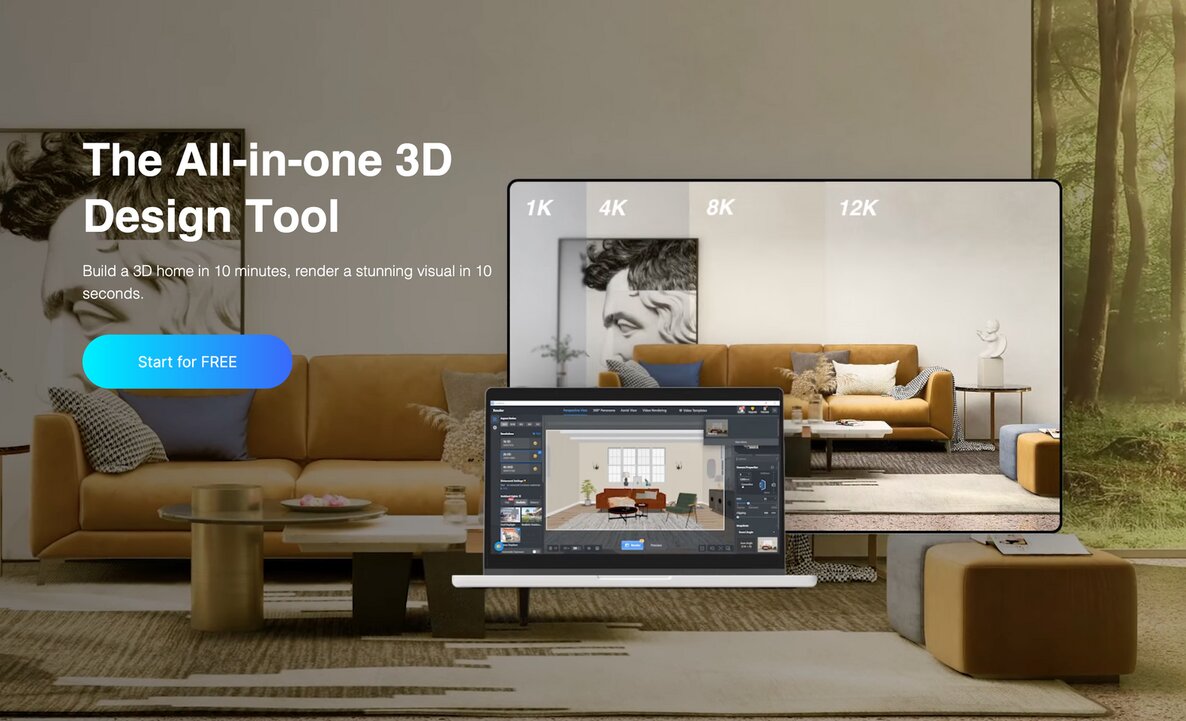Realistic textures hold significant importance within 3D environments. They contribute to immersion by creating a more authentic atmosphere. Additionally, these textures enhance the overall visual appeal, making scenes and objects look more convincing and engaging.
By providing context and intricate details, these textures are instrumental in capturing and maintaining user engagement while fostering a sense of authenticity in 3D environments.
The increasing demand for immersive and lifelike visuals is evident across various industries. As technology advances, both customers and professionals seek more realistic and engaging visual experiences to enhance their engagement. So, keep reading the article to find out the best practices for developing authentic textures in 3D environments.
Importance of Realistic Textures in 3D Environments
First thing first, before diving into actionable tips for creating authentic textures in 3D environments, let’s discuss the benefits of realistic textures in 3D environments.
Source: https://www.openpr.com/news/2710091/3d-modeling-3d-visualization-and-3d-data-capture-market-size
✓ Enhanced immersion
Realistic textures deepen the sense of immersion in 3D environments, creating a more convincing and engaging experience.
✓ Visual realism
They improve the overall visual quality, making objects and scenes look lifelike and aesthetically pleasing.
✓ Context and detail
Textures provide crucial information about an object’s material, history, and wear, enhancing storytelling and context within the environment.
✓ Depth and realism
Realistic textures simulate lighting, surface roughness, and material properties, adding depth and authenticity to the virtual world.
✓ User engagement
They captivate users’ attention, fostering a stronger connection with the environment and sustaining user engagement. Using an email verifier can enhance user engagement by ensuring that your communication reaches genuine recipients and strengthens the connection between your brand and its authentic audience.
How to Craft Realistic Textures in 3D Environments
There is no doubt crafting authentic textures in 3D environments will bring several benefits, so let’s discuss strategies to effectively implement this process.
Research and Reference Gathering
Research and reference gathering are crucial steps in crafting realistic textures in 3D modeling and rendering. They help you understand the materials you’re trying to replicate and provide valuable insights into their visual and tactile characteristics. Here are a few steps on how to approach research and reference gathering:
✓ Define your project
Clearly define the scope and purpose of your 3D texture project. Understand what specific materials or surfaces you need to replicate.
✓ Identify reference sources
Determine where you can find reference materials. This can include books, magazines, online resources, physical samples, and real-world observations.
✓ Online resources
Use search engines, image libraries, and online communities related to 3D modeling and texturing to find relevant references. Websites like Pinterest, Google Images, and specialized texture resource websites can be valuable sources.
✓ Material research
Study the physical and chemical properties of the materials you’re texturing. This knowledge can help you simulate how they interact with light. Moreover, a white-label content assistant greatly aids in achieving realistic textures in 3D environments by streamlining material research and content generation.
✓ Test and iteration
Continuously test and refine your textures in your 3D modeling software. Compare them to your reference materials to ensure accuracy. Adjust settings like bump maps, displacement maps, and normal maps to capture the material’s texture and depth accurately.
Remember that achieving realistic textures in 3D is an iterative process that requires attention to detail and continuous learning. The more effort you put into research and reference gathering, the better your final textures will be.
Unwrapping UVs for Seamless Textures
Unwrapping UVs in 3D modeling is an essential step for crafting realistic textures. This process involves flattening the 3D model onto a 2D plane, allowing textures to be applied seamlessly. With properly unwrapped UVs, artists can achieve lifelike textures and efficiently paint or use intricate patterns, enhancing the overall realism of their 3D creations.
Additionally, mastering UV unwrapping ensures that textures align correctly across the model’s surface, promoting reusability and improving workflow efficiency, making it an indispensable skill for 3D artists and designers. Plus, video production agencies can also benefit from mastering UV unwrapping, as it enhances the seamless integration of 3D assets into their projects, saving time and improving the overall quality of their work.
Furthermore, the meticulous process of UV unwrapping empowers artists to control how textures interact with the 3D model’s geometry, enabling them to emphasize details, create weathering effects, and bring out the nuanced surfaces of their designs. This level of control is instrumental in achieving hyper-realistic textures that can captivate viewers and immerse them in virtual worlds.
Creating High-Quality Texture Maps
Creating high-quality texture maps is paramount in crafting realistic textures for 3D models. These texture maps serve as the foundation for the visual richness and authenticity of objects, characters, and environments in the digital world.
✓ Resolution matters
Begin with high-resolution texture maps to capture intricate details, ensuring your textures hold up under close scrutiny.
✓ Photorealistic references
Use real-world references or photographs of materials as a guide for texture creation, helping you achieve authenticity.
✓ Layered approach
Create texture maps in layers, separating diffuse, specular, normal, and other properties to have precise control over each aspect of the material.
✓ UV unwrapping
Properly unwrap the 3D model’s UVs to maximize texture map efficiency and minimize distortion, ensuring seamless application.
✓ Iterate and refine
Continuously refine your texture maps through iteration and feedback, striving for realism while maintaining performance considerations.
Source: https://sketchfab.com/blogs/community/tutorial-procedural-texturing-workflows-for-3d-artists/
Utilizing Procedural Textures
Utilizing procedural textures is a game-changer in crafting realistic 3D textures. These textures, generated algorithmically rather than from images, offer exceptional flexibility and detail. They maintain sharpness at any resolution and simulate intricate surface properties, enabling the recreation of diverse materials with consistency.
Procedural textures are versatile, simulating various natural and synthetic materials like wood, metal, and fabric. Artists control them by adjusting parameters like scale and color, ensuring precise texture customization. This approach enhances realism and cohesiveness, making procedural textures a crucial tool for 3D texture creation.
Source: https://garagefarm.net/blog/pre-rendering-versus-real-time-rendering-whats-the-difference
Real-Time vs. Pre-Rendered Environments
The choice between real-time and pre-rendered environments is pivotal for crafting realistic textures in 3D environments. Real-time environments, used in video games and simulations, demand performance optimization, including texture compression and lower-resolution maps.
Artists must strike a balance between visual quality and smooth interactivity. Pre-rendered environments, common in cinematic productions and architectural visualization, allow for high-quality textures and photorealistic scenes but lack interactivity. The choice depends on project goals, with each approach offering unique advantages. In this matter, a YouTube production company specializing in virtual tours must balance stunning pre-rendered visuals with real-time interactivity based on project goals.
Real-time environments prioritize interactivity, often requiring performance optimization like texture compression. Pre-rendered environments excel in high-quality textures and photorealism but lack interactivity, suitable for static presentations. The choice depends on project goals and specific requirements.
Iteration, Feedback, and Continuous Learning
Iteration, feedback, and continuous learning are essential principles in crafting realistic textures for 3D environments.
Iterative processes involve the repeated refinement of textures to achieve desired levels of realism. Texture artists often create multiple versions, making incremental adjustments based on feedback and observations. This iterative approach allows for the gradual enhancement of texture quality, ensuring that each iteration brings the texture closer to the intended realism.
Feedback is a critical component of the texturing process. Artists seek input from peers, mentors, or clients to gain fresh perspectives and identify areas for improvement. Constructive feedback helps artists refine their textures, address shortcomings, and align their work with project goals. It also fosters collaboration and ensures that the final textures meet or exceed expectations.
Furthermore, utilizing an NPS survey can quantitatively measure the satisfaction of clients and stakeholders, providing valuable data to gauge the overall quality of the texturing process and make data-driven improvements.
Continuous learning is another fundamental component in the ever-evolving field of 3D texture creation. Artists must stay updated on the latest tools, techniques, and industry trends. This ongoing education allows them to push the boundaries of realism, adapt to new technologies, and maintain a competitive edge in the field.
In summary, the integration of iteration, feedback, and continuous learning is crucial for texture artists aiming to craft highly realistic textures in 3D environments. These principles drive improvement, foster creativity, and ultimately lead to textures that captivate and immerse viewers in virtual worlds.
Overall, creating high-quality texture maps in crafting realistic textures for 3D environments requires meticulous attention to detail, a keen eye for realism, and a commitment to ongoing refinement.
Conclusion
Crafting realistic 3D textures demands technical skills and artistic finesse. It involves using high-resolution, reference-guided texture maps in layered compositions, ensuring precise control. Effective UV unwrapping guarantees seamless application, and ongoing iteration is essential for realism while managing performance.
In the evolving 3D graphics field, staying current with trends is vital. Continuous learning empowers artists to create immersive, lifelike environments. The article discusses tactics to develop realistic surface textures in 3D and ultimately deliver an enriched visual experience to customers.
Contact marketing@coohom.com to get partnerships, and share more insights.
Social Contact:

